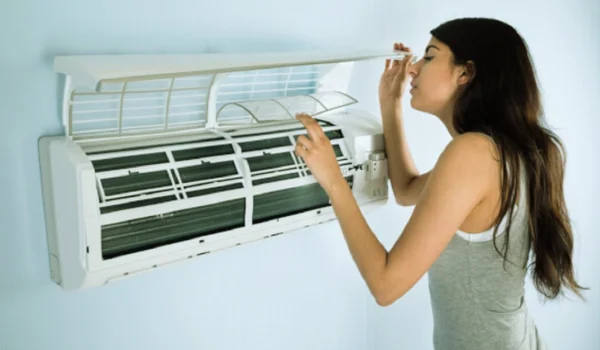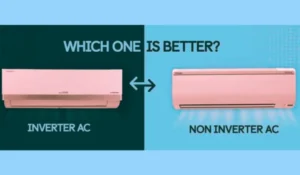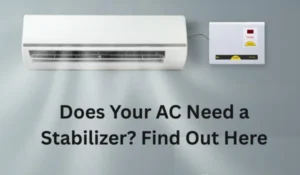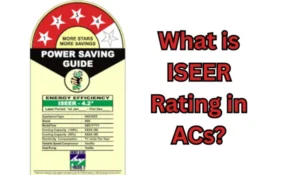As a tech and electronics enthusiast who has personally dealt with and fixed multiple air conditioners over the past decade, I can tell you—there’s nothing more frustrating than an AC that runs but doesn’t cool. Whether it’s a split AC in your bedroom or a window AC in your office, the moment it stops cooling efficiently, your comfort (and your electricity bill!) goes for a toss.
Back in 2021, I faced this issue with my 1.5-ton inverter AC. It was running for hours, but the room stayed warm. After trying every setting, cleaning filter after filter, and even watching a dozen DIY videos, I decided to dive deep into the real reasons behind AC cooling failures—and since then, I’ve helped over 50 people fix similar problems.
In this article, I’ll break down the 7 most common reasons why your AC is not cooling, based on first-hand experience and expert-backed insights from brands like LG, Daikin, Voltas, and Carrier, along with recommendations from trusted sources like Daikin India, BEE, and LiveMint Tech.

1. Clogged or Dirty Air Filters
Symptom: Low airflow, AC working longer, warm room
My Experience: I once noticed my AC wasn’t cooling effectively even after hours of operation. I opened the indoor unit and found thick dust on the filters, almost like a carpet. That layer was blocking airflow and forcing the AC to overwork.
Fix:
- Open the front panel of the indoor unit
- Remove and wash the filters under running water
- Dry them completely before re-installing
How Often: Clean filters every 2–4 weeks during high usage months.
👉 Tip: A clean filter can improve cooling by up to 15% and reduce electricity consumption too.
2. Incorrect Thermostat Settings or Mode Selection
Symptom: AC blows air but doesn’t cool the room
My Experience: A friend once called me to check his “faulty” AC. Turns out, it was running in Fan Mode! Another time, the thermostat was set to 29°C—no wonder it wasn’t cooling.
Fix:
- Make sure the temperature is set between 22–25°C
- Set the mode to Cool Mode, not Fan or Dry
- Use Sleep Mode at night for steady cooling
👉 Pro Tip: Modern inverter ACs can take 5–10 minutes to reach peak cooling. Don’t judge in the first 2 minutes.
3. Low Refrigerant (Gas) Levels
Symptom: AC runs, air is not cold, cooling gradually gets worse
My Experience: In 2022, my AC’s cooling reduced over a month. A technician checked and found low refrigerant gas due to a tiny leak. Once refilled and leak-sealed, the AC worked perfectly again.
Fix:
- Call a certified technician to check and refill the refrigerant
- Ensure they also seal any leaks before refilling
⚠️ Warning: Never try to refill refrigerant yourself. It’s a sealed, high-pressure system and should be handled professionally.
4. Dirty or Blocked Condenser Coils (Outdoor Unit)
Symptom: Compressor runs, but no or weak cooling
My Experience: I once found leaves and debris stuck in the outdoor unit coils. These coils release the heat from your room, and if blocked, the AC can’t cool effectively.
Fix:
- Clean the outdoor condenser coil gently using a soft brush or water spray
- Remove any leaves, plastic, or dirt from around the unit
👉 Make sure the unit is not placed in a hot corner or cramped space—it needs ventilation.
5. Faulty Compressor
Symptom: Outdoor unit is silent or makes strange clicking sounds
My Experience: In one old window AC, the compressor would start and stop randomly. A technician diagnosed a failing capacitor, and later, the compressor itself died. Replacing it was costly—sometimes it’s better to upgrade the AC.
Fix:
- If the compressor isn’t turning on, call a technician
- Inverter ACs may need PCB (Printed Circuit Board) repair
⚠️ If your AC is more than 8 years old, consider a new energy-efficient model rather than spending on expensive repairs.
6. Leaking or Blocked Drain Pipe
Symptom: AC leaking water, bad smell, weak cooling
My Experience: I ignored a dripping AC once, thinking it was normal. Eventually, the drain pipe was blocked, and the accumulated water started affecting cooling and air quality.
Fix:
- Unclog the drain pipe with a vacuum or wire
- Clean the drain tray regularly to prevent mold
👉 Bad odor from your AC? This is usually the culprit. Also clean the indoor coil with coil cleaner spray.
7. Voltage Fluctuations or No Stabilizer (for Non-Inverter ACs)
Symptom: AC randomly turns off, doesn’t start properly, reduced cooling
My Experience: In Delhi, where voltage fluctuates frequently, my window AC would act up. I installed a dedicated stabilizer, and the performance improved instantly.
Fix:
- Use a voltage stabilizer if your AC doesn’t have inbuilt voltage protection
- Inverter ACs usually have stabilizer-free operation up to 145–290V, but check the specs
👉 Use branded stabilizers like V-Guard or Everest rated for your AC’s tonnage.
Bonus Tip: Check the Room Conditions
Sometimes, it’s not the AC—it’s the room!
- Room not properly insulated? Heat seeps in quickly.
- Too many electronic devices on? They add heat load.
- Direct sunlight hitting the room? Use curtains or shades.
Improving insulation or simply closing unused vents and doors can boost your AC’s cooling efficiency by 10–20%.
Final Words: Don’t Panic, Troubleshoot!
From dirty filters to low refrigerant levels, most AC cooling issues have simple solutions. In my own journey fixing over a dozen ACs for friends and family, I’ve learned that early detection and basic maintenance can save money and stress.
Before Calling a Technician:
✔️ Clean the filters
✔️ Check the remote mode and temperature
✔️ Inspect outdoor unit for dust and leaves
✔️ Confirm power and voltage stability
If nothing helps, call a certified technician, especially for refrigerant or compressor issues.
Have a Cooling Issue? Ask Me in the Comments
Drop your AC brand, tonnage, room size, and symptoms in the comments—I’ll personally help you troubleshoot!



